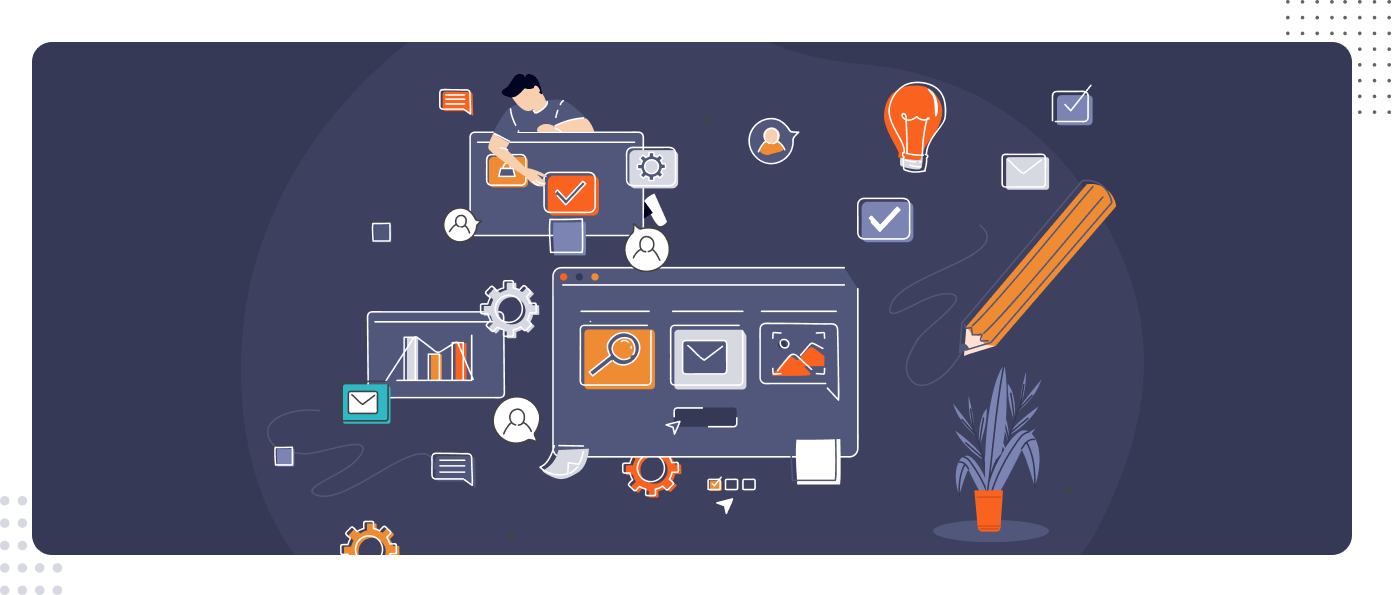Software Copyright vs Patent: Essential Guide for Developers
Decoding Software Protection: Copyright vs. Patent in the US! Unveil the key contrasts, pros, and cons for safeguarding your digital...

According to a 2022 Gartner Report, 65% of businesses are adopting FaaS, revolutionizing software development. This article explores FaaS's role, benefits, and challenges, including a learning curve and potential cost implications. Providing a balanced view, it assists readers in understanding the FaaS landscape and evaluating its suitability for their front-end innovation efforts.
This article delves into the merits of leveraging FaaS in the software development process. The focus is on how FaaS accelerates this process by offering robust frameworks and components, aids in business digitization, and mitigates system failure risks. Additionally, it explores counter-arguments including the potential challenges in learning FaaS and the cost implications for certain organizations.
Understanding the world of software development often feels like scaling a formidable peak, especially with emerging technologies such as 'Front end as a service'. With a heap of responsibilities already on your plate, this added layer might seem overwhelming. However, to stay competitive in the fast-paced digital landscape, embracing these new technologies isn't merely an option - it's a necessity. In the game of digital supremacy, FaaS is a player you can't afford to ignore.
Leveraging 'Front end as a Service' empowers developers with the tools to craft dynamic user experiences, circumventing the need to start from scratch, thus accelerating the software development process.
Frontend development plays a pivotal role in shaping the customer experience on any digital platform. Modern front-end frameworks empower developers to implement front-end features independently, which accelerates the app's business logic development process.
FaaS harnesses this power by providing access to these robust frameworks along with other essential components that make service work more efficient and effective. As such, it's closely linked to front- and back-end operations, leading to comprehensive system failure risk mitigation.
FaaS isn't just about coding; it also offers a holistic service solution including aspects like API orchestration, layer management, headless CMS utilization, and microservice architecture implementation, all aimed at delivering unique user experiences while meeting current business requirements.
Solving Customers' Problems: This integrated approach allows frontend developers not only to solve customers' problems but also to contribute significantly towards massive business digitization efforts. They can seamlessly integrate third-party solutions into their apps or utilize platforms like Vue Storefront, enhancing content management capabilities and supporting omnichannel marketing strategy execution.
Mitigating Risks through System Failure Risk Mitigation: In addition to efficiency benefits, FaaS helps mitigate risks associated with system failures. By allowing developers access to powerful debugging tools within their preferred environment, they ensure smooth operation even when scaling up or down depending on demand levels, thus promoting stability and reliability throughout the entire lifecycle of the application project.
The Impact of Composable Commerce: An area where FaaS shows significant impact involves the creation of customizable modules that cater specifically to the individual needs of each organization, resulting in personalized shopping experiences for every single customer across different channels. Furthermore, integration with Headless CMS systems makes it possible to store content effectively and efficiently, making it easier for users to find what they're looking for and ultimately improving overall satisfaction rates and conversions alike.

FaaS is revolutionizing software development, equipping developers with robust tools to create dynamic user experiences. By providing comprehensive solutions like API orchestration and microservice architecture implementation, FaaS enhances business efficiency and mitigates system failure risks. It also enables personalized customer experiences through composable commerce.
'Front end as a Service' offers a practical solution to streamline your software development process. By providing pre-built, reusable components and interfaces, it enables developers to focus on core functionalities, accelerating the production timeline and enhancing the overall user experience, thereby optimizing your digital offering.
The beauty of FaaS is its array of ready-to-use solutions. Rather than expending time composing code from the ground up or troubleshooting intricate frameworks, developers can take advantage of microservice engineering made accessible by FaaS stages like AWS Lambda and Google Cloud Functions.
Faster implementation: With access to various frontend frameworks and tools, implementing front-end features independently becomes quicker than ever before.
Easier maintenance: Since these services work closely linked with third-party integrations such as headless CMSs or API orchestration layers - maintaining them becomes less cumbersome too.
Better scalability: These solutions are designed keeping current business requirements in mind which means scaling up/down based on demand levels isn't just possible - it's easy.
The world has seen unprecedented changes recently due largely in part to technological advancements leading towards more online-centric models across industries - ecommerce being a prime example where composable commerce plays a pivotal role now. This calls for agile, flexible, and robust technologies capable of handling the dynamic nature of modern marketplaces without compromising customer experience quality at any point during their journey. And this is exactly what you get when using frontend development services like Vue Storefront offered under the FaaS model. It offers seamless integration capabilities along with content management aspects, ensuring your omnichannel marketing strategy stays intact throughout the entire lifecycle of the project, thereby helping solve customers' problems effectively while improving overall system failure risk mitigation processes within the organization simultaneously.
If there was one thing we learned from our discussions about app's business logic development, it would be how important having control over UX/UI design truly is today, especially considering the level of competition out there currently. But worry not, because thanks to the benefits brought forth via utilization of FaaS solution; even if you aren't proficient in a specific programming language/framework required to build a certain feature/functionality, you can still manage to deliver outstanding results effortlessly due to the comprehensive toolset made available right at your fingertips, thereby providing an opportunity to create and provide a unique user experience to each and every single visitor of your site/app, regardless of their technical expertise/background whatsoever.

To remain competitive in the ever-changing digital landscape, businesses must rapidly adjust their strategies. One way they can do this is by maximizing efficiency in their software development process using Front End as a Service (FaaS).
Coding from scratch consumes valuable time that could be better spent on other tasks like strategizing or problem-solving. How does one reduce the coding load? By leveraging frontend frameworks provided by FaaS.
FaaS offers pre-built components that developers can easily integrate into applications without having to write extensive code lines themselves - saving precious hours of work. Plus, these modules are already tested and debugged, reducing system failure risk mitigation efforts significantly.
Making use of robust tools available through front-end services not only simplifies app's business logic development but also helps create intricate applications faster than traditional methods allow.
No more learning new programming languages: With access to ready-to-use APIs at your disposal, you don't have to spend extra resources mastering unfamiliar technologies. This makes implementing front-end features independently much easier.
Simplify third-party integrations: The API orchestration layer often included in such service solutions ensures seamless integration with external systems, providing enhanced customer experience while solving customers' problems effectively.
In today's world, where massive business digitization occurs overnight, it's essential for companies to keep up. Using FaaS allows them to respond swiftly to changes within industry standards and customer demands - keeping them ahead of the competition at all times. Moreover, the scalability and flexibility offered by scalable solutions ensure that regardless of whether needs increase or decrease over time, they are well-equipped to handle any situation with minimal disruption.
Besides offering closely linked front-end and back-end functionalities, many providers utilize microservice architecture, allowing independent deployment of various parts of the application, thus further enhancing overall performance and making management simpler and more efficient.

FaaS is the ace up your sleeve in today's fast-paced digital world. It saves coding time, offers powerful tools for complex applications, and ensures you stay competitive by swiftly adapting to changes. With FaaS, you're not just keeping pace—you're setting it.
Say goodbye to laborious coding from scratch and wrestling with intricate programming languages. This trailblazing approach brings simplicity to the fore, providing pre-assembled components for swift application integration.
The outcome? Robust, interactive user experiences, crafted with both efficiency and effectiveness. 'Front end as a Service' brings to the table scalability and adaptability - critical assets in the fast-paced digital world of today.
By cutting down on coding and debugging time, businesses can now channel their resources and energy towards what genuinely counts: engineering unique user experiences that keep them at the forefront of their competition. Embrace 'Front end as a Service' - your key to competitive advantage in the digital age.
Front-end as a Service (FaaS) is an innovative software development approach that provides pre-built components for creating, deploying, and managing web applications efficiently.
An example of a front-end service could be tools like React or AngularJS. These services provide developers with ready-to-use elements to build interactive user interfaces quickly.
In front-end development, services refers to the use of APIs or libraries that aid in building robust and dynamic user interfaces without writing extensive code from scratch.
The frontend directly impacts how users interact with your application. A well-designed frontend enhances usability, accessibility, and overall user satisfaction - crucial factors for positive customer experience.
Decoding Software Protection: Copyright vs. Patent in the US! Unveil the key contrasts, pros, and cons for safeguarding your digital...
Explore the power of outsource engineer services in unlocking business efficiency, covering benefits, factors to consider, and best...
remote software developers outsourced software development software developers
Discover the game-changing potential of ChatGPT in this article. Explore how AI-powered chatbots are reshaping customer support, driving...